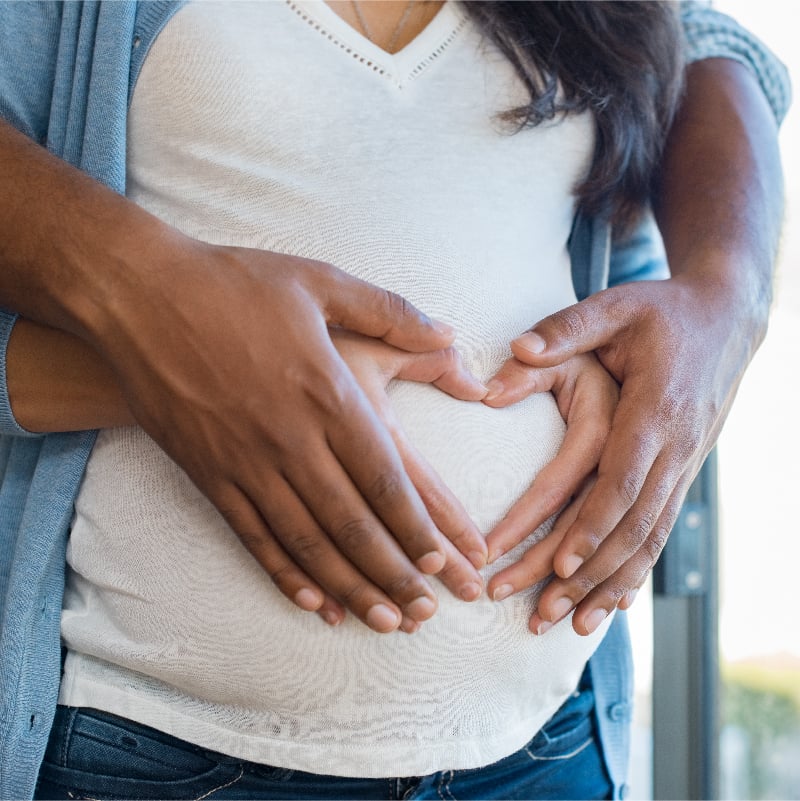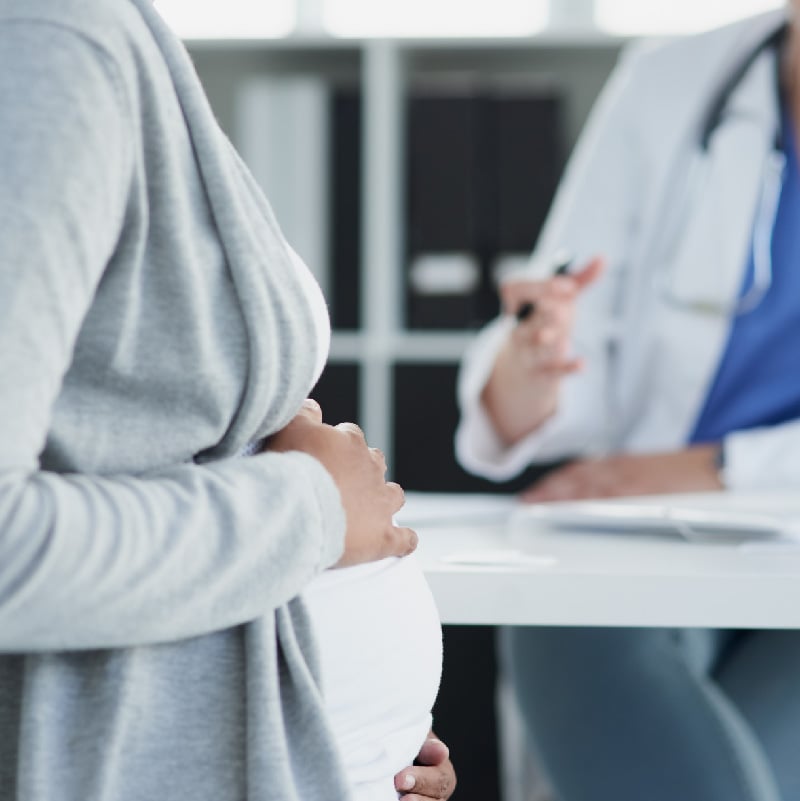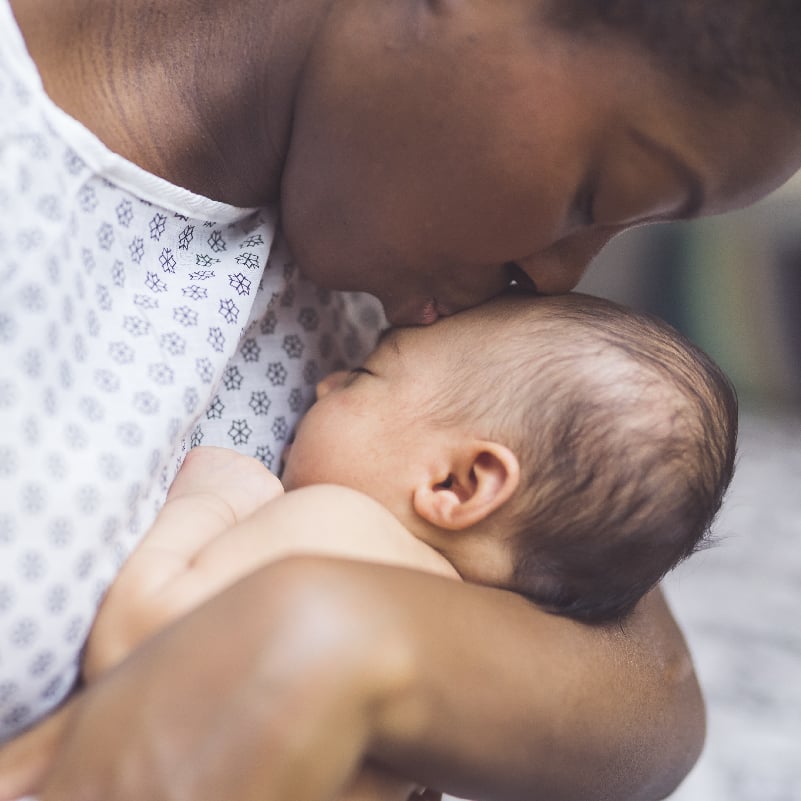Physical activity and regular exercise during pregnancy can be beneficial to the health of both the mother and baby. Certain, low-impact exercises have a variety of health benefits, while more intense activities may be risky.
What exercises are safe for you and your baby? We asked Rochester Regional Health midwife M. Robin MacIntyre, MSN, CNW common questions about safe exercises and how to stay active while pregnant.
What are the benefits of exercising during pregnancy?
Regular exercise throughout pregnancy can reduce back pain, ease constipation, and may decrease risk of gestational diabetes. Routine exercise while pregnant can improve posture and reduce discomfort like back pain and fatigue. Exercise can also reduce stress and build more stamina to prepare for labor and delivery.
Participating in physical activity promotes healthy weight gain, improves overall fitness, and strengthens your blood and heart vessels. Routine exercise may even reduce the risk of cesarean section delivery. MacIntyre recommends walking as a, “great form of exercise in all three trimesters of pregnancy, as well as post-partum.”
What exercises are safe during pregnancy?
In moderation, most exercises are safe to perform while pregnant. The American College of Obstetricians and Gynecologists (ACOG) recommends getting 30 minutes of physical activity at least five days a week throughout pregnancy.
For those who were active before conception, it is safe to continue your normal fitness and recreational activities while pregnant. Be sure to monitor your health and be careful to avoid injury or trauma.
The safest activities for pregnant people are:
- Swimming: Easy on the joints, swimming is a great way to get your heart rate up and stay active while pregnant.
- Modified Yoga: Muscle-strengthening, pain-relieving, and relaxing, yoga is a safe, healthy exercise that may help make labor shorter and more comfortable. However, it’s recommended to avoid “hot yoga” during the first trimester.
- Modified Pilates: Many prenatal Pilates classes are designed specifically for pregnant women to help focus on shifting balance.
- Stationary cycling: Cycling boosts your heart rate without putting stress on your joints.
- Brisk walking: Walking is a safe way to tone muscles and improve mood.
- Low-impact aerobics: Aerobics have low risk of injury, keep your heart and lungs strong, tone the body, and boost endorphins.
- Low-intensity weight training: This is best for those who practiced weight training prior to pregnancy. If you’ve never strength trained before, try other exercises to help you stay fit.
“If you regularly play low-intensity, non-contact sports like tennis or racquetball, it’s not necessary to stop when pregnant,” explains MacIntyre. “As you move further along in your pregnancy, reduce activities that can cause falls or sudden changes in body position.”
What exercises should be avoided during pregnancy?
Some exercises and activities and be risky if performed while pregnant, including:
- Activities where falling is likely, like skiing
- Contact sports, like softball, volleyball, or basketball
- Activities that can cause sudden changes in body position, which can lead to abdominal trauma
- Exercises that require a lot of jumping, hopping, skipping, bouncing, or running
- Bouncing while stretching
- Deep knee bends, sit-ups, leg raises, and toe touches
- Waist-twisting movements
- Exercise in hot, humid weather
- Dangerous activities, like skydiving or scuba diving
When in doubt, MacIntyre suggests walking, as it is “free, visually stimulating; especially in Western NY, and physically satisfying.” We are especially lucky in upstate New York, where the weather is temperate during the spring, summer and fall.
What changes occur in a pregnant body that may affect exercise?
The body goes through a variety of changes during pregnancy. Three key areas of the body experience change that can affect the way a pregnant woman exercises:
- Joints: Hormonal changes during pregnancy cause ligaments to become more relaxed, increasing risk of joint injury.
- Balance: The extra weight in the front of the body causes a shift in the center of gravity, placing stress on joints and muscles, especially in the lower back. Because of this, pregnant women are at higher risk of falling.
- Breathing: During pregnancy, your need for oxygen increases, which can affect your ability to do intense exercise.
Are there warning signs of unsafe exercise?
Any pregnant person who experiences any of the following symptoms should call their health care provider immediately:
- Blood or excess fluid from the vagina
- Fever over 101 degrees Fahrenheit
- Persistent or worsening pain in the stomach
- Sudden swelling of the face, hands, or ankles
- Unusual problems with your eyes
- Decreased fetal movement
- Regular, painful contractions of the uterus
Is there anyone who should avoid exercise during pregnancy?
If you have a medical problem, such as asthma, heart disease, preeclampsia, severe anemia, or diabetes, you may want to avoid exercise during pregnancy.
“We’d always recommend that you talk with your health care provider to determine what exercise is safe for you and your baby,” said MacIntyre.








